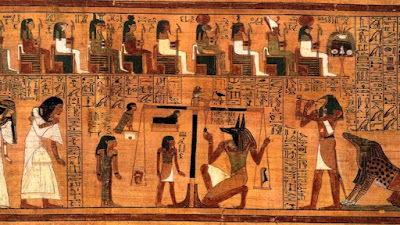Paleolithic
Age
It
is a Prehistoric Ages. It extends from the emergence of our firs
Antecessor to about 11000 years ago.
Neolithic
Age
It
is a Prehistoric Ages. It began about 11000 tears ago.
Groups of human beings started to live in villages. They
practised agriculture and raised cattle.
Metal
Age
It
is a Prehistoric Ages. It began about 7000 years ago. Human beings
learned to use metals to make objects.
Homo
Habilis
It
is a Human species. These appeared two million years ago. Their brain
was bigger. Their name habilis mans skilful. They made stone tools
and lived from hunting and gathering.
Homo
Erectus
It
is a Human species. These appeared one and a half million years ago.
They walked upright. This was the first species to live outside
Africa. They lived in Europe and Asia. They discovered fire.
Excalibur
It
was also found in Atapuerca. It is not King Arthur's sword. It is an
extraordinary biface of beautiful red quartize.
Nomadic
It
is when the people moved from one place to another in the Paleolithic
Age.
Neolithic
Revolution
Neolithic
means new stone. Howeder it was not just the technology of stone
instruments of stone instruments which was new. There were other
important changes.
Wheel
It
is an object in the Metal Ages which greatly improved transport.
Plough
It
is an object in the Metal Ages which made working the land easier and
faster.
Mehir
It
was single long vertical stones. They were probably connected to the
cult of the Sun.
Stone
Circles
Its
were wide circles formed by several menhirs. They probably had a
religious function.
Australopithecus
It
is a Human species. These appeared about five million years ago. They
wee very similar to chimpanzees. However the Australopithecus
normally walked on two feet.
Homo
Antecessor
It
is a Human species. They were the oldest human remains in Europe,
that appeared in Atapuerca Spain. They are 8000000 years
ago.
Homo
Neanderthal
It
is a Human species. They were a different specie who lived in Europe
150000 years ago. They were stronger than we are but shorter. They
were the first species to bury their dead. It seems they were able to
speak.
Homo
Sapiens
It
is a Human species. Our specie appeared in Africa about 130000 years
ago. Homo sapiens were slimmer but taller than Neanderthals. They
enjoyed greater intellectual development. They were able to make
finer tools. They developed a more complex language the ability to
interact whit other human beings and to cooperate. They also created
art.
Atapuerca
It
is one of the most interesting and beautiful sites relating to human
evolution. This archaeological site is near Burgos in the north of
Spain. It was found accidentally in the nineteenth century when a
trench for a mining train was being built. However the most important
discoveries have been made very recently.
Biface
It
is a prehistoric stone tool, made with two faces.
Palaeolithic
Arte
It
is a type of art, called cave art. About 35000 years ago human beings
started decorating caves with paintings.
Pottery
It
is a Neolithic object. They used clay vessels to store cereal and
bowls to eat and cook.
Sail
It
is an object in the Metal Ages which meant that ships could be bigger
because they used the force of the wind.
Neolithic
monuments
They
were monuments built with big blocks of stone in the last years of
the Neolithic Age and during the Metal Ages. They were
called megaliths.
Dolmens
They
were complex constructions. Vertical stones covered by horizontal
blocks. They were used as burial places.
Stonehenge
The
ruins at Stonehenge are the remains of a stone circle. The enormous
stones which form the outside circle weigh around 25 tons each. The
stones inside are even bigger. Archaeologists believe that Stonehenge
was built over 5000 years ago but they do not agree about its
function. Most people thick it is connected to the cult of the
Sun. However it could also be an astrological observatory.















